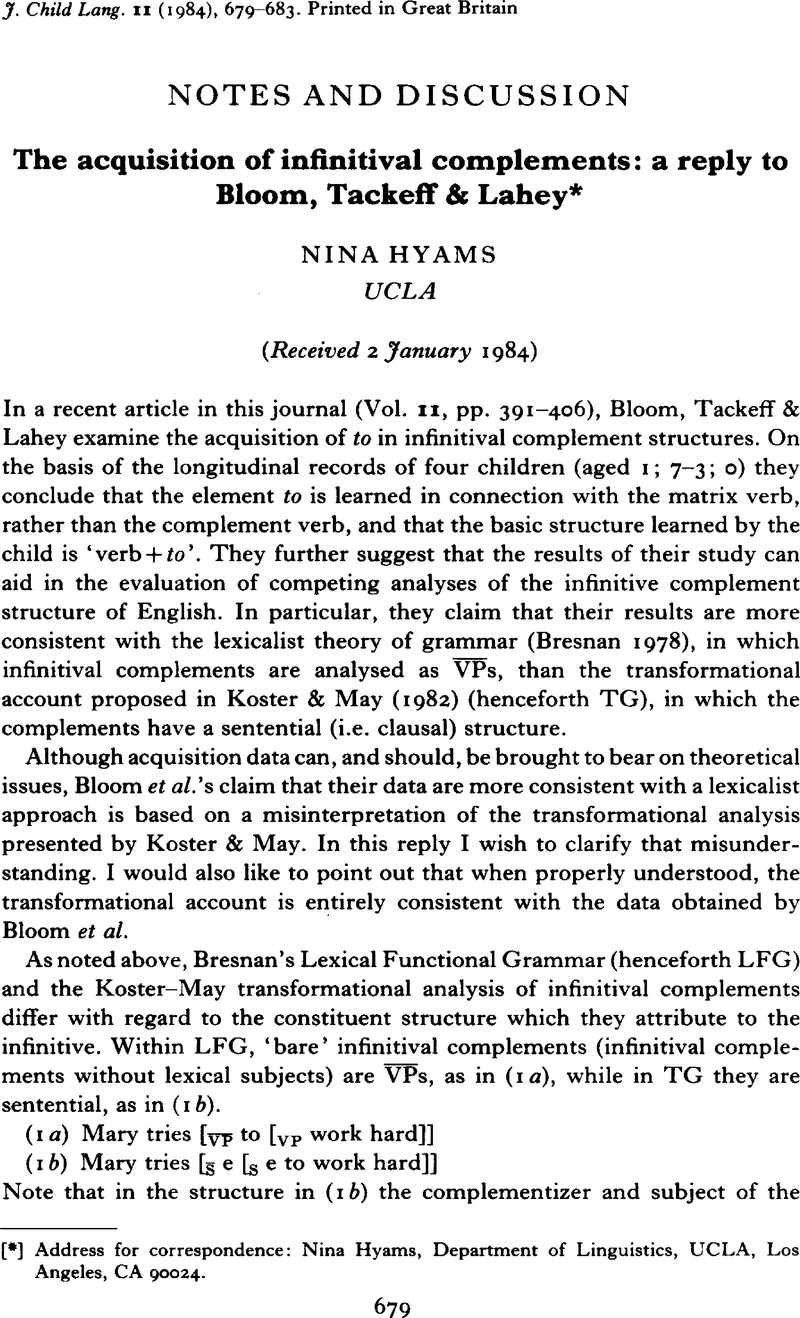Crossref Citations
This article has been cited by the following publications. This list is generated based on data provided by Crossref.
Mazurkewich, Irene
1988.
Linguistic Theory in Second Language Acquisition.
Vol. 8,
Issue. ,
p.
127.
Kim, Young-Joo
1989.
Theoretical implications of complement structure acquisition in Korean.
Journal of Child Language,
Vol. 16,
Issue. 3,
p.
573.
Gutierrez-Clellen, Vera F.
and
Hofstetter, Richard
1994.
Syntactic Complexity in Spanish Narratives.
Journal of Speech, Language, and Hearing Research,
Vol. 37,
Issue. 3,
p.
645.
Santos, Ana Lúcia
Gonçalves, Anabela
and
Hyams, Nina
2016.
Aspects of the acquisition of object control and ECM-Type verbs in European Portuguese.
Language Acquisition,
Vol. 23,
Issue. 3,
p.
199.



